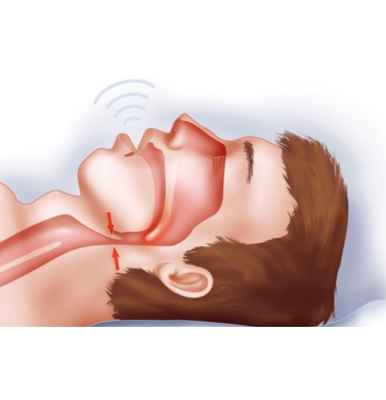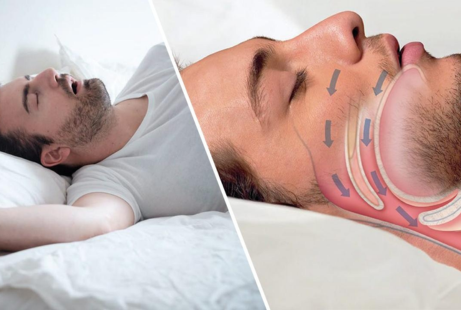Sleep apnea is a sleep disorder where breathing repeatedly stops and starts during sleep. The most common type, obstructive sleep apnea, occurs when throat muscles relax excessively. Understanding its prevalence is crucial because it affects millions of people worldwide, often without their knowledge. Recognizing how widespread sleep apnea is helps in raising awareness, encourage early diagnosis, and promote effective treatment. Without proper management, sleep apnea can lead to serious health issues like heart disease and high blood pressure. At Royal Medical & Equipment Trading, we provide essential medical equipment to support the effective diagnosis and treatment of sleep apnea.

What is Sleep Apnea?
Sleep apnea is a condition where you briefly stop breathing during sleep. “apnea” comes from the Greek word for “breathless.” Sleep apnea occurs either due to a blockage in the airway (obstructive sleep apnea) or because the brain does not properly regulate breathing (central apnea). When breathing stops, the body senses a lack of oxygen and triggers a reflex that partially wakes you to restart breathing. Although this reflex prevents you from stopping breathing completely, it disrupts your sleep cycle. This interruption prevents you from getting restful sleep and can strain your heart, leading to potentially serious health risks.
Essential Medical Equipment for Managing Sleep Apnea
- CPAP (Continuous Positive Airway Pressure) Machines: Devices that provide a continuous flow of air to keep the airway open during sleep.
- BiPAP (Bilevel Positive Airway Pressure) Machines: Similar to CPAP but offers two levels of pressure for inhalation and exhalation.
- CPAP Humidifiers: Attachments that add moisture to the air are delivered by CPAP machines to prevent dryness and irritation.
- CPAP Masks: Various types of masks (nasal, nasal pillow, full-face) designed to fit comfortably and ensure effective therapy.
- Oximeters: Devices that measure blood oxygen levels and can help monitor the effectiveness of sleep apnea treatment.
- Anti-Snoring Pillows: Specialized pillows that help keep the airway open and reduce snoring.
Risk Factors
1. Obesity
Excess weight can lead to fat deposits around the neck and throat, which can block the airway during sleep.
2. Age
Risk increases with age as muscle tone decreases, which can affect the throat’s ability to stay open.
3. Gender
Men are more likely to develop sleep apnea than women, although the risk for women increases after menopause.
4. Family History
A genetic predisposition can make some individuals more susceptible to sleep apnea.
5. Anatomical Factors
Structural issues like a large tongue, a small jaw, or a deviated septum can obstruct the airway.
6. Smoking
Smoking irritates the airway, leading to inflammation and an increased risk of sleep apnea.
Alcohol relaxes throat muscles, which can lead to airway obstruction during sleep.
8. Medical Conditions
Conditions like high blood pressure, diabetes, and hormonal disorders can contribute to sleep apnea.
How These Factors Contribute to Its Prevalence
- Obesity: As the global obesity rate rises, so does the incidence of sleep apnea. Excess weight around the neck can significantly obstruct the airway, leading to more cases being diagnosed.
- Age: An ageing population contributes to higher prevalence rates. Older individuals are more likely to experience decreased muscle tone, which can exacerbate sleep apnea.
- Gender: Since men are at a higher risk, the prevalence rate reflects this gender disparity. Women’s risk of increasing postmenopause also adds to the overall prevalence.
- Family History: Genetic factors lead to a higher likelihood of developing sleep apnea, which means that individuals with a family history are more prone to the condition, influencing prevalence rates.
- Anatomical Factors: Those with certain anatomical issues are more likely to experience obstructive sleep apnea, affecting the overall prevalence as these issues are common.
- Smoking and Alcohol: These lifestyle choices are widespread, and their impact on increasing the risk of sleep apnea contributes to its higher prevalence.
- Nasal Congestion: Chronic nasal issues are common and can lead to sleep apnea, adding to the overall number of cases.
- Medical Conditions: The prevalence of conditions like diabetes and high blood pressure, which are increasingly common, also contributes to higher rates of sleep apnea.
Understanding these risk factors helps in identifying and managing sleep apnea more effectively, ultimately aiming to reduce its prevalence and impact.
The Importance of Recognizing and Treating Sleep Apnea
1. Improves Overall Health
Early recognition and treatment of sleep apnea can reduce the risk of serious health issues like heart disease, high blood pressure, and diabetes.
2. Enhances Quality of Life
Effective treatment can alleviate symptoms like daytime drowsiness and irritability, leading to improved daily functioning and overall well-being.
3. Prevents Accidents
Addressing sleep apnea can reduce daytime sleepiness, lowering the risk of accidents at work, at home, and while driving.
4. Boosts Cognitive Function
Proper treatment helps restore restful sleep, improving concentration, memory, and cognitive performance.
5. Supports Emotional Health
Treating sleep apnea can stabilize mood, reduce depression and anxiety, and enhance overall emotional health.
6. Helps Manage Other Health Conditions
Treating sleep apnea can improve the management of coexisting health conditions and reduce complications.
7. Improves Sleep Quality
Treatment helps restore normal breathing patterns, leading to more restful and restorative sleep.
Recognizing and treating sleep apnea is crucial for maintaining overall health and improving quality of life. If you suspect you have sleep apnea, seeking medical advice and undergoing appropriate treatment can have significant long-term benefits.
conclusion
Understanding how common sleep apnea is highlights its significant impact on health and daily life. Recognizing the widespread nature of this condition underscores the importance of addressing it promptly. If you experience symptoms like loud snoring, excessive daytime sleepiness, or difficulty breathing during sleep, it’s crucial to seek medical help. Early diagnosis and treatment can prevent serious health issues, improve sleep quality, and enhance overall well-being. Don’t ignore the signs—consult a healthcare provider to discuss your symptoms and explore effective treatment options. Your health and quality of life depend on it.
